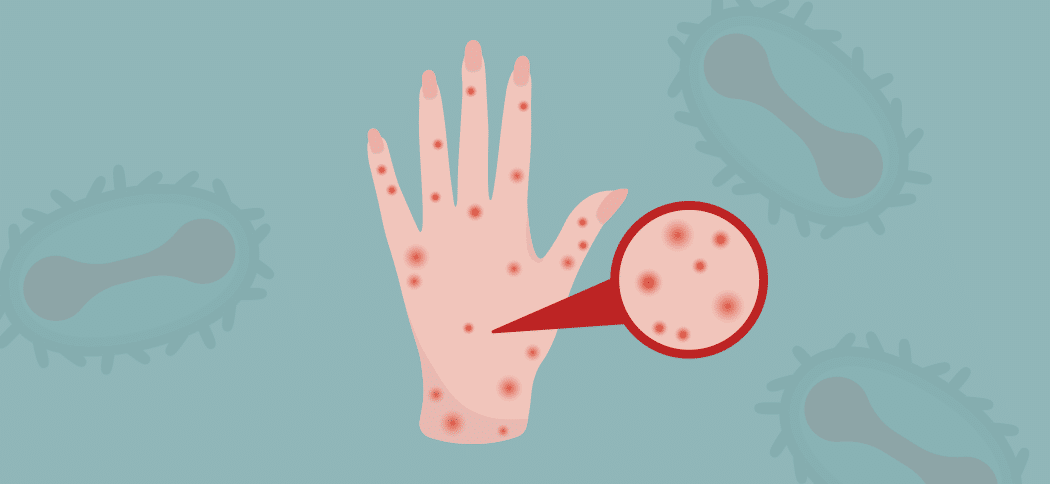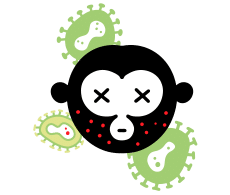Key-Points
How Difficult is It To Kill?
Is the Disease Serious?
Is it Real?
How Does it Spread?
Monkeypox has been making headlines for recent outbreaks. As of writing, the CDC has been tracking over 3,400 confirmed cases in the US. As a top leading professional disinfection company, Bio Recovery has been monitoring and tracking the outbreaks to address concerns as coverage continues. Our discrete emergency hotline is available 24/7/356 to answer any questions or concerns you have regarding Monkeypox Cleaning and Disinfection.
Monkeypox Cleaning and Disinfection
Monkeypox is currently an active EVP case as of 2022. It is classified as a Tier 1 Enveloped Virus and the EPA has yet to confirm an official disinfectant to kill the virus. The EPA currently recommends disinfectants under List Q: Disinfectants for Emerging Viral Pathogens (EVPs).
The steps to professionally treat the affected area include:
- Wearing appropriate PPE for the situation.
- Testing the area using the proper equipment several times during the job to ensure all surfaces have been properly treated.
- There are currently no disinfectants registered for use against Monkeypox by the EPA. We are closely monitoring and following developing EVP guidelines.
- Issuing a certificate of hygiene once all areas are officially decontaminated.
While the disease is rarely fatal, it is still a potentially serious viral disease, so the situation should be assessed and handled by a professional monkeypox cleaning and disinfection company like Bio Recovery. Bio Recovery has over 20 years experience taking care of these types of situations, and we are licensed, bonded, and insured to handle all biohazard situations. We are certified by OSHA, EPA, and DOT to properly treat areas and dispose of all biohazard matter.
What Monkeypox Is and How It's Transmitted
Monkeypox is rarely fatal but nonetheless a very serious disease caused by contact with the virus. It is not a new virus and yes, it is very real. The first human case was actually discovered in 1970. Recent outbreaks following recent pandemics have brought it into the public’s consciousness with greater intensity and confusion.
Currently, the origin of the outbreaks are thought to be stemming from international travel, similar to the trajectory of isolated cases in the past.
How it Spreads
Monkeypox is not airborne, it is spread through direct contact. Direct contact includes:
- Infected scabs, rashes, or body fluids with an infected person.
- Intimate sexual and non sexual physical contact with an infected person.
- Touching infected fabrics or objects also spreads the illness.
- Pregnant women can also spread the virus to their fetus through the placenta.
The rash is considered contagious from when it appears to when it is fully healed with a fresh layer of skin. The healing process usually lasts 2-4 weeks.
What is unknown as of 2022:
- If the virus can be spread when someone shows no symptoms
- How often the illness is transmitted from respiratory secretions
- Whether the virus is passed through semen, vaginal fluids, urine, or feces.
Did the virus originate from monkeys?
The virus started in animals in 1958, when monkey colonies being kept in captivity for research were faced with an outbreak of a pox-like virus. That’s where the disease got its name, despite the exact source of the illness remaining unknown. It’s still not clear if the disease is spread directly from non-human primates or African rodents (also known to carry it) to humans.
What is the difference with Chickenpox?
Chickenpox is not related to Monkeypox. The two viruses come from entirely different viruses, and therefore, even if you have had Chickenpox, you’re still at risk of getting sick from the Monkeypox virus.
The noticeable difference boils down to the symptoms. Chickenpox affects only one area of the body, while Monkeypox can affect the entire body. The most important clinical symptom which gives Monkeypox its diagnosis is lymphadenopathy, or the slower than average development of skin lesions along with a “pre eruptive” fever.
References
https://pubmed.ncbi.nlm.nih.gov/2907258/
24/7 Professional Disinfection At Your Service
It's better to have trained professionals take care of affected areas like these. Risking your health and the health of other's around you is a chance you don't want to take. Let us take care of it so you don't have to. Call our 24/7 hotline any time you need assistance.
Share this Post

